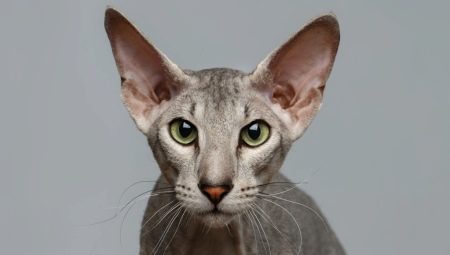Peterbald is one of the most unusual and beautiful cat breeds. They embody elegance and restraint. Their appearance is mesmerizing, and character conquers. What you need to know about this breed before deciding to make yourself a Peterbold will be discussed in this article.
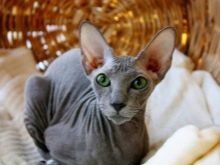
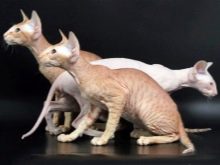
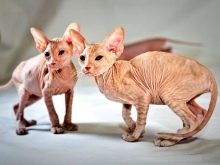
Origin history
These unusual cats owe their birth to a man who crossed two breeds - the Don Sphinx and Oriental. As for the first experiment on such crossing, it was produced in 1994. It was carried out by the St. Petersburg felinologist Olga Mironova, who thus bred four kittens-hybrids. They became the official ancestors of Peterbalds.
The felinological associations quickly recognized this breed, endowing them with their own abbreviation and official natural status. But despite this, the breed of St. Petersburg sphinxes is still developing, although since 1997 they can not be crossed with Don brothers.
Felinologists believe that peterbolds should incorporate the natural features of Siamese cats and orientals, while the presence of wool or its absence does not affect the breeding values of the breed.
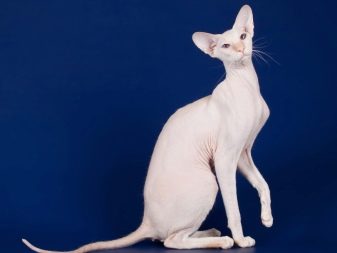
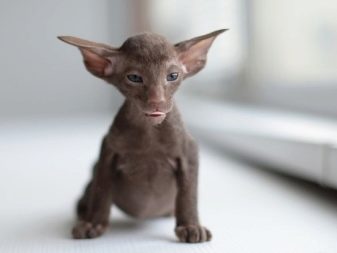
Description
It is difficult to confuse a pet breed cat with any other. It is endowed with exceptional characteristics that determine the appearance of a purebred St. Petersburg sphinx.
- Cats have a narrowed head, which is noticeably sharpened and smoothly passes into a thin elongated neck.
- As for the nose, it is long and straight, like a sharp blade. If you look at the side of the Peterbald, then you can say one word about his profile - “royal”.
- The ears of St. Petersburg kittens are quite large, while they have a wide base and tips that look slightly to the sides. Specialists felinologists give a big assessment of the "British postaval" of the auricle of Peterbold, which can hold the paper sheet laid on it.
- These cats do not have a mustache. In rare cases, you can find a peterbold with curly villi, as if broken.
- As for the eyes, they are a real highlight of this breed. They are almond-shaped, expressive and slanting, with an iris of blue, yellow or green hue. Little kittens do not see anything at birth, but their eyes open early, after 5 days.
- The body of these cats is elongated, medium size. The shoulders and hips are equal in width. The weight of females varies from about 2.5 to 3.5 kilograms, and the weight of males can reach a maximum mark of 5 kilograms.
- Petersburgers have straight, slender and long legs. If the cat's forelimbs are curved, then this refers to a breed defect.
- This breed is the owner of a long thin tail - from the base to the tip.


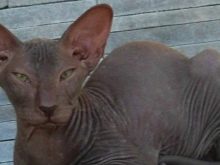
The variety of colors and the length of the coat of peterbalds deserve special mention. Colors range from cream to chocolate or purple. The black Petersburg sphinx looks completely unique, but such a color can be rarely seen. Most often, tortoise colors are found. The following skin are distinguished.
- Brush - kittens are born with hair, and with growing up it disappears.
- Brush point - kittens have hair on the body and tail. With age, the torso becomes bald, and hair remains on the muzzle and limbs.
- Lovely kittens. They have no hair, while the body visually resembles rubber.
- Straight-haired cats. This version of the breed has both hair and antennae, while they do not disappear with age.
- Velor kittens. Their hair is all over their bodies, including paws and tail. With age, this breed bald everywhere, except for the limbs.
- Flock cat. The skin is soft and velvety. Mustaches are absent, the hair on kittens is about 2 millimeters.
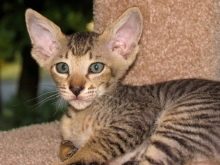
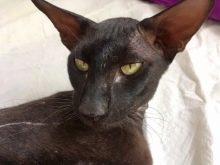
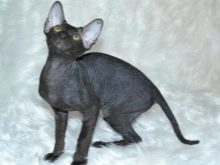
Life span
St. Petersburg sphinxes live for about 13-15 years. But there are factors that can adversely affect the lifespan of these cats.
- Sunlight. Sunbathing in this breed is contraindicated. Sphinx is a hairless breed, burns can easily form on their skin. Therefore, you should protect your pet from direct sunlight.
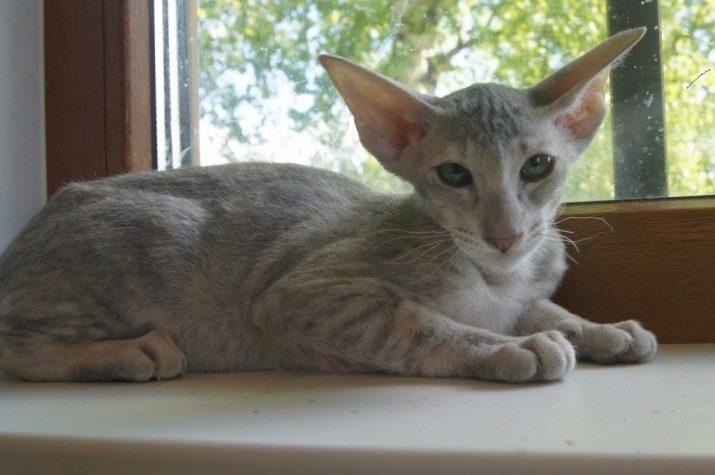
- Dangerous conditions of stay. Petersburgers are extremely direct, like little children. They like to explore the territory of residence along and across. All this threatens injuries.
Therefore, it is better for the owner to ensure safe living conditions for the pet in advance - hide sharp or heavy objects that could fall or cause injury to the cat.
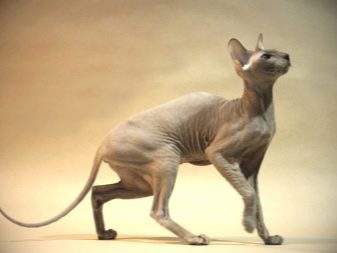
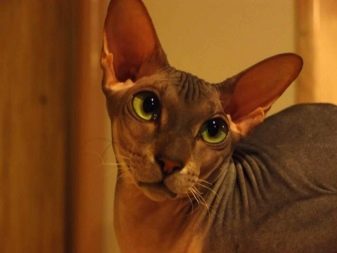
- Loneliness. Petersburgers are essentially sociable animals. They need the presence of a host nearby. A busy person who spends a lot of time at work should think a thousand times before getting himself a St. Petersburg sphinx. These cats do not tolerate loneliness very well, in the end it shortens the cat's life by almost half. If the family has many households, including children and even dogs, then Peterbald will live a long and truly happy life.
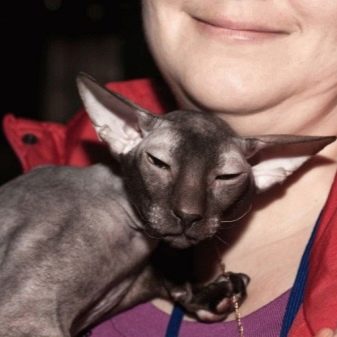
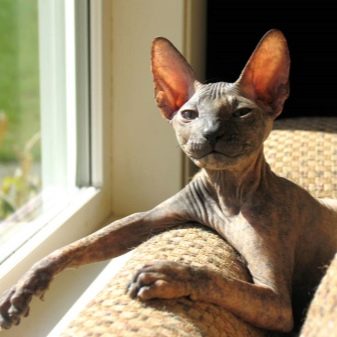
- Overweight. Petersburgers are extremely gluttonous. One can say that they have a real affair with food, so it is important for the owner to control the weight of his bald pet and not indulge his whims. Food should be dosed and at the same time contain the necessary minerals and vitamins. Otherwise, overweight will become a serious problem for the cat and will negatively affect his health status.

- Poor hygiene. Since the St. Petersburg sphinxes are hairless animals, they require special care.The formation of a fat layer occurs on their skin, and this is a comfortable environment for the development and reproduction of dangerous bacteria. Therefore, the cat must be bathed daily, using special protective equipment. Also in the ears of this breed sulfur often accumulates, which must be removed with a cotton swab once a week.


- Hypothermia. Sphinxes due to lack of wool often freeze. If the house is cold, then the cat is likely to catch a cold and get sick. You can get out of the situation by buying pet clothes in a pet store or warm litter. But not all sphinxes like to go in knitted sweaters, so clothes are acceptable only with the consent of the pet.
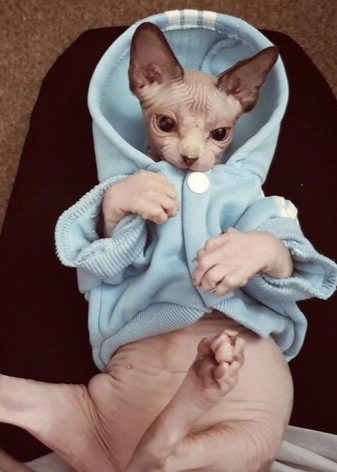
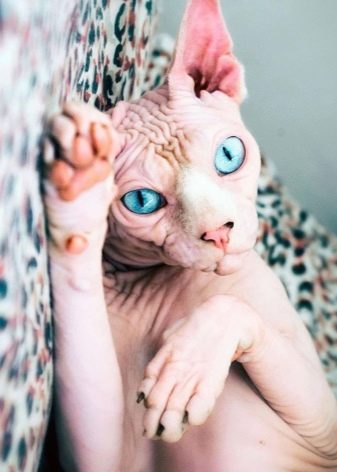
- Hereditary factor. If the pet had a long-lived in the family, then Peterbald is more likely to inherit this feature. Congenital malformations, birth injuries, or a weak immune system also shorten lifespan. And immunity is strengthened with the help of the right diet and care.
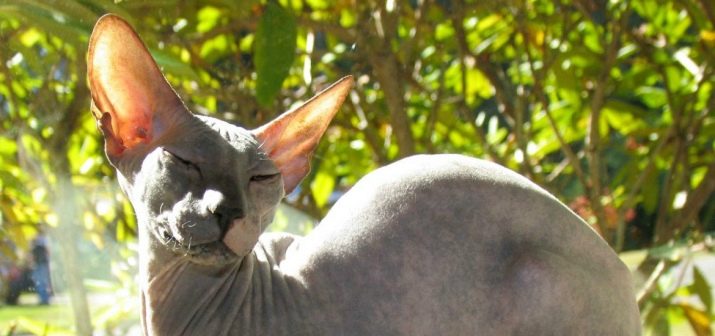
It is widely believed among veterinarians that castrated sphinxes live longer. This procedure favorably affects the health of cats and cats of this breed, hormonal problems and risks of sexual diseases, for example, prostatitis, disappear. In addition, it is believed that cats that have passed this procedure become kinder and calmer. Therefore, if the owner does not plan to breed St. Petersburg sphinxes, he should castrate or sterilize his pet, thereby increasing his life expectancy.
An interesting fact: on average, this breed lives 12 years, but one sphinx managed to reach the mark of 30 years!
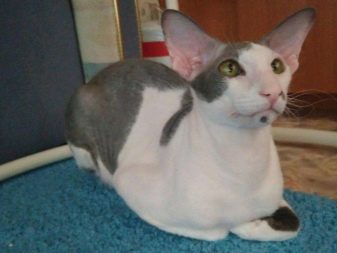
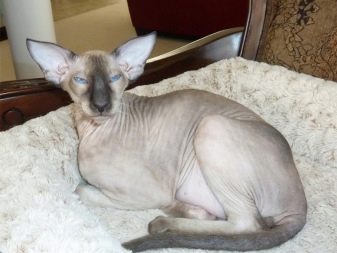
Character
Peterburgs are unique animals and have many positive features, among which are the following.
- Friendliness. And this is not an empty phrase. Petersburg sphinxes can make friends with all household members, including other pets and even dogs.
- Love of love. This character trait follows from the previous one. The bald pet will be happy to spend time in the hands of the owner and even come to his bed at night. Also, cats of this breed love to play with children. These are truly tame animals.
- Placability. Representatives of cats, as you know, remember the grudge for a long time and can even take revenge on the owner by tearing the curtains or spilling the need for shoes. Petersburg sphinxes this feature bypassed. They easily forget about disagreements with the owner and are already ready to caress and purr again.
- Talkativeness. Besides meowing, peterbolds like to purr and make other funny, interesting sounds. They like to communicate with their master in this way, so it is better for a person who prefers silence to abandon the idea of having a St. Petersburg sphinx.
- Cleanliness. Petersburgers have not only an aristocratic appearance, but also an appropriate character. Animals of this breed take care of their hygiene and are clean.
- Curiosity. These cats are real explorers. There will not be a single corner in the apartment, no matter where the Peterbold climbed. And it doesn’t matter whether the door is open or closed in front of him - the animals have a unique ability to penetrate into all inaccessible places. They are also interested in accompanying their masters in any endeavor, but without getting underfoot.
- Devotion. Petersburgers can make serious competition to dogs in this line of character. They simply adore their masters, but among all members of the family they especially single out one for themselves. It is he who becomes for the bald pet not just a friend, but also a leader. After him, a cat or a cat can follow on its heels throughout the apartment, not for a minute leaving one, even in the bath.
It is important for Petersburg to be an integral part of its owner’s life, to feel important and significant for him. And this bald pet will certainly reciprocate attention and care.
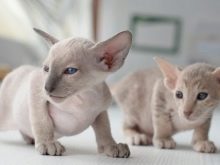

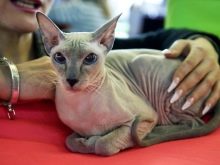
Petersburgers may show discontent, meowing loudly if they are hungry for a long time or are alone. With all the feline independence, this breed needs attention, so the owner should not leave the pet alone with himself, otherwise he will get bored and even get sick.
With proper care and love, Peterbald can become a true and faithful friend.
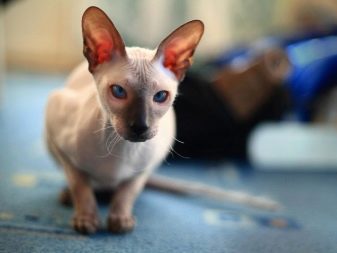
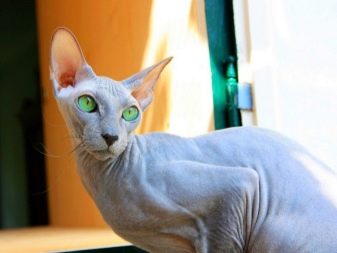
How to feed?
Petersburgers are real gluttons. They do not control the absorption of food at all, so they easily gain weight. If the owner does not follow the diet of his pet, then he will not have time to blink an eye, as his graceful sphinx will become thick and clumsy. Peterbald is ready to eat for days on end, and all in a row. If he wants to feast, then he will certainly examine every corner in the kitchen and eat everything that is left unattended - from chocolate to chips. Therefore, the main rule for someone who decided to get a St. Petersburg sphinx is to hide food in an inaccessible place.
It is important to correctly draw up a nutrition plan for this breed of cats and adhere to it. To determine that the diet is not selected correctly, just look at the skin of the pet. If the brown substance is secreted by the skin too actively and in large quantities, then you need to change the diet, and it is better to get the advice of an experienced veterinarian in this matter.

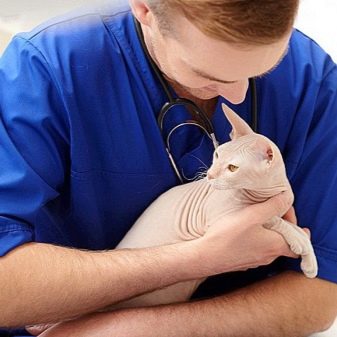
Kittens from one month should eat 5 times a day, from two months - 4, and from four - 3. A two-time meal will be considered adult food and it should occur no earlier than at the age of eight months. In this case, the food should be warm (not hot and not cold).
Dry food harmoniously fits into the diet of the St. Petersburg sphinx. But the main thing when buying is to pay attention to the quality and availability of all the necessary vitamins and minerals in the feed. As for natural products, you can also feed them a pet. It is better to combine feed and natural food, alternating them.
If the owner decided to completely abandon dry food, then you should stock up on extra vitamins for the pet, because in ordinary foods they will be missed.
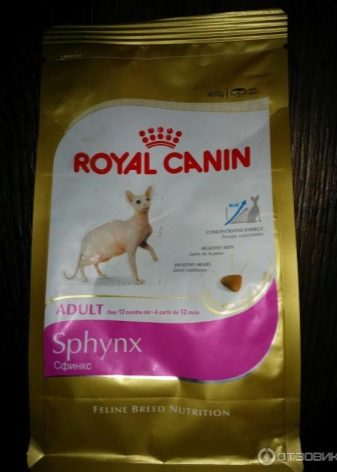
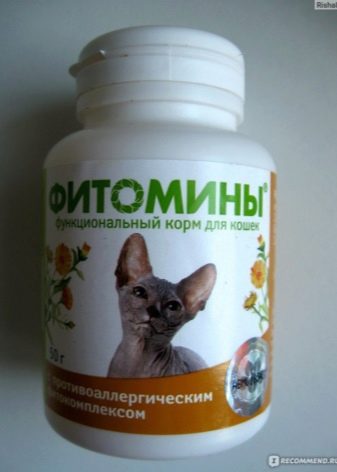
How to feed Peterbald, except for dry food:
- boiled meat products: beef, chicken, turkey, veal;
- by-products: lungs, heart;
- vegetables: beets, zucchini, pumpkin;
- rice and millet porridge;
- fish (but only sea and boiled);
- kefir (fat-free), cottage cheese, yogurt;
- pork or beef bones and cartilage (but not fish or chicken, otherwise the pet will choke).
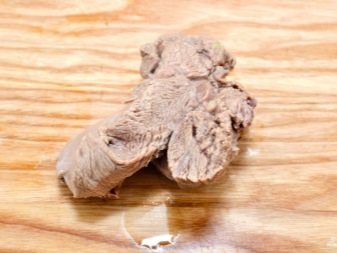

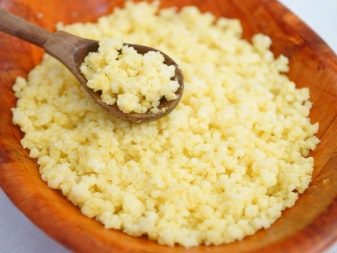

What foods should not be pampered peterbolda:
- sweets;
- smoked fish, sausage;
- eggs
- milk, cream, sour cream and butter;
- potatoes and legumes;
- fruit.


If you choose the right diet for a bald pet, then digestion problems and excess weight will bypass Peterbald.
Care Features
This is not to say that the St. Petersburg sphinxes require special care. Unlike cats that have hair, hairless pets do not need to be combed. This is the main plus of this breed. Otherwise, there are commandments that every owner must observe, namely:
- bathing a cat;
- nail clipping;
- rubbing the eyes;
- ear cleaning.
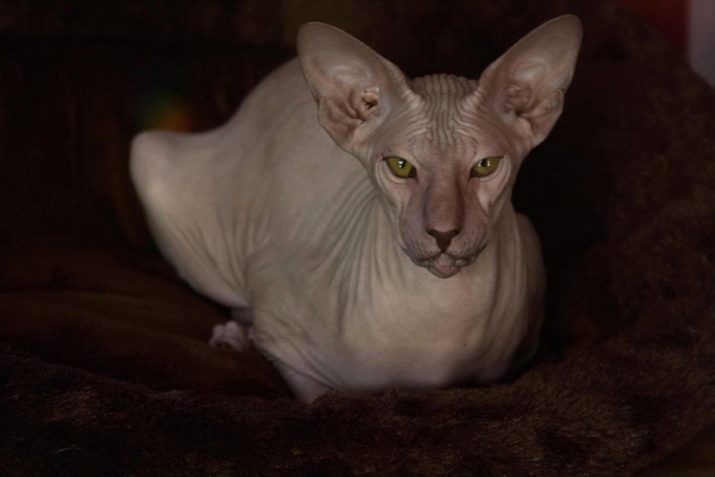
Peterbold needs more bathing than the average cat. The fact is that his body is prone to sweating and other pollution. But veterinarians do not recommend washing the St. Petersburg Sphinx every day.
The fact is that a special lubricant is formed on the skin of these pets, which performs a protective function, and regularly washing it off, you can provoke stress in the pet. Nevertheless, it still needs to be carefully removed. It is better to do this with a clean cloth dipped in caring oil. Or you can do with an ordinary wet towel. Do not get carried away with frequent bathing with the use of shampoos, otherwise the skin of the peterbold will begin to peel off.
But if the pet is really dirty, then you can even bathe it using tar soap. After the procedure, you need to properly wipe the sphinx, otherwise it will catch a cold and get sick.
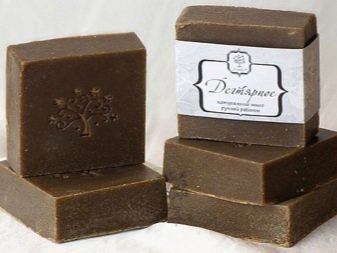
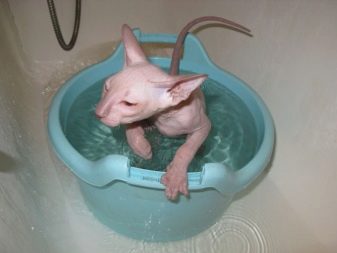
As for clipping, you need to do this 2-3 times a month. But this does not mean that the pet will not need a scratching post. When cutting, it is better to additionally treat each claw of peterbold with a file, so that the skin of the pet is less scratched when scratching.
The eyes of St. Petersburg sphinxes require special care for one simple reason - this breed of cats does not have cilia, so their eyes are not protected from the accumulation of various secretions in them. Every morning the owner needs to examine the eyes of the pet. If mucus has accumulated in them, remove it with a clean cloth. It is worth paying attention to the color of the selection. A healthy sign is transparent mucus in the corners of the eyes, but if the shade has turned brown or green, then you need to consult a veterinarian.
A secret accumulates in the ears of the peterbolds, but the owner does not need to panic because of this and try to clean it daily with cotton buds. It will be enough to do this once every 7 days, after purchasing a special lotion in a veterinary pharmacy. With the same lotion, you need to wipe the areas between the claws (the accumulation of fatty deposits, which prevents the cat from moving).

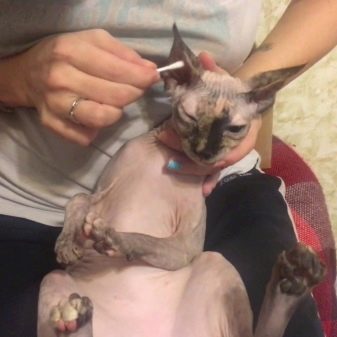
Sebaceous glands are concentrated on the tail of the St. Petersburg sphinx in large numbers, so often acne and acne occur there. Special lotions for cleansing will come to the rescue here.
Some owners believe that the animal needs regular depilation of dead hairs. Moreover, the animal looks more aesthetically pleasing. But do not rush in this way to give the appearance of a cat nobility. Shaving will negatively affect the subsequent coat, making its structure stiff and even less attractive.
Thus, carrying out all these simple care procedures, you can be sure of the health and tidy appearance of a bald pet.

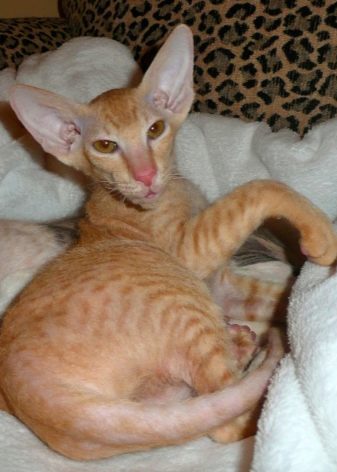
Health
Petersburg sphinxes, like all thoroughbred individuals, have a number of genetic diseases. But fortunately for the owner, they are few.
- The most dangerous disease is considered an underdeveloped thymus. The objective of this organ is the growth and development of the animal's body, as well as in immune defense. If the thymus is underdeveloped, the St. Petersburg sphinx will die while still being a kitten.
- Cats of blue and tortoiseshell colors are more prone to gingival hyperplasia. This affects the chewing of food and further problems with the gastrointestinal tract. When the first signs of inflammation appear, you need to consult a veterinarian for advice and a treatment plan.
- Petersburgers due to lack of wool can get colds. Therefore, it is important not to overcool a pet, after bathing, wipe it dry, and wear warm clothing in cold weather. Often cats of this breed climb onto the bed to the owner and sleep with him under the covers. You can also buy warm litter for your pet.
- Petersburgers suffer from allergies. Moreover, the rash is never once. Usually this becomes a constant ailment of the animal. But the owner should not panic, because a special lotion from a veterinary pharmacy will save the pet from allergic reactions. It is only important to monitor the condition of the skin of the pet and exclude factors that provoke rashes.
- The lack of wool in the St. Petersburg sphinxes makes them especially vulnerable to external dangers. For example, if the owner has a private house, and the cat walks on the street, then because of the curiosity of the animal, it is likely to get any kind of injury (including an insect, reptile or dog bite). It is better to keep Peterbald at home in order to avoid all kinds of injuries that will provoke further skin diseases.
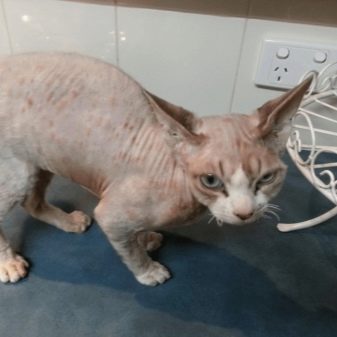
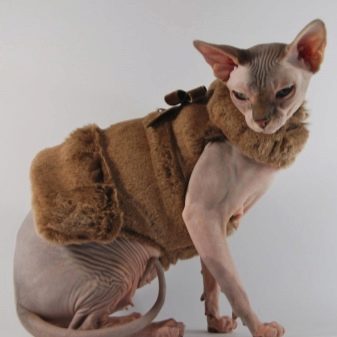
The main thing is to regularly monitor the condition of the pet, avoiding all the pitfalls, and then health problems can be avoided or at least minimized. In general, peterbalds have a good immune system that is resistant to many diseases, which is an undoubted advantage of this breed.
Breeding
Knitting peterbalds requires special attention and approach. It is better not to engage in experiments, especially for inexperienced breeders. It is allowed to knit the St. Petersburg sphinx with the oriental, Siam, Javanese and Balinese.
It is important to consider the point that if a kitten is purchased for breeding purposes, special care must be taken. Otherwise, you can see the sterility of boys and the absence of lactation in girls.

What rules must be observed so that the knitting is correct.
- A cat needs to be knitted only when it reaches the age of 12 months. In this case, she must pass the first or second estrus. Until this moment, mating is prohibited, because the pet's body is not yet fully formed.
- It is better that at least one of the pets already had a knitting experience, otherwise it may get confused, as a result of which the result will not be achieved.
- Both representatives of the breed should be vaccinated 2 weeks before mating (including preventive measures against worms).
- Do not bathe a cat before knitting it. Special shampoos will wash away its natural smell, which should attract the male.
- According to the rules, the cat must be brought to the cat. This is done because it is important for cats to feel calm in their own territory. Otherwise, they will begin to explore unfamiliar territory, which will take a lot of time. It is important that the estrus in the cat lasts 2 or 3 days before mating. The term for which you can leave one pet with another is a maximum of 5 days.
- In both animals, claws should be trimmed - because of aggressiveness and even cruelty of mating games. Otherwise, the St. Petersburg sphinxes risk harming each other.
- As for childbirth, it is better for cats to give birth up to 7 years, with 1 or 2 times during the year. Thus, the health of Peterbald will not be harmed.
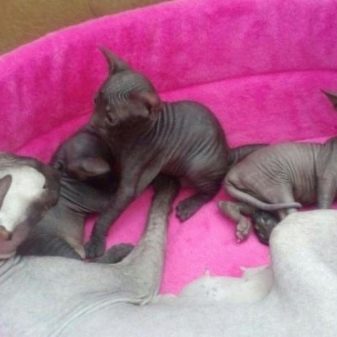

If you follow all the rules of care, feeding and mating of St. Petersburg sphinxes, do not deprive them of attention and give them care, then these tender bald pets will delight the owners for many years.
See more about the Peterbald breed in the next video.
